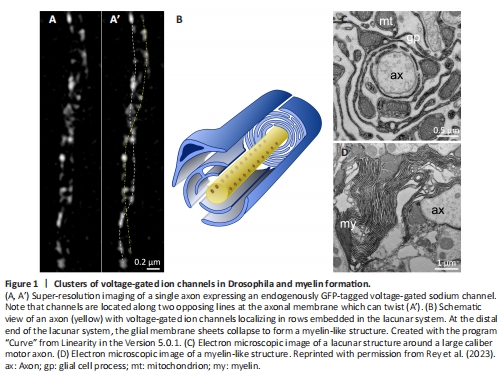神经损伤与修复
-
Figure 1|Clusters of voltage-gated ion channels in Drosophila and myelin formation.

In Drosophila, myelin-like structures appear as a consequence of having a lacunar system, and the lacunar system forms in regions with very high voltage-gated ion channel density. Thus, Drosophila development may depict the different stages of myelin evolution. Early on, during larval stages, the voltage-gated ion channel density is low. They still organize in clusters but no lacunae form. In the adult, voltage-gated ion channel density is very high and lacunae form which is accompanied by myelin-like structures at their distal end (Figure 1). The notion that the formation of voltage-gated ion channel clusters is evolutionarily older than the formation of myelin is also supported by the finding that unmyelinated axons of vertebrates show a node-like clustering (Pristerà et al., 2012). Moreover, channel clustering occurs prior to myelination. In mammals, clustering of voltage-gated sodium channels is mediated by the ankyrin-G scaffolding protein. Although the anchor motif for sodium channel clustering evolved early in the chordate lineage and is absent in many invertebrates, including Drosophila, axon initial segments are still found in flies (Hill et al., 2008; Rey et al., 2023).